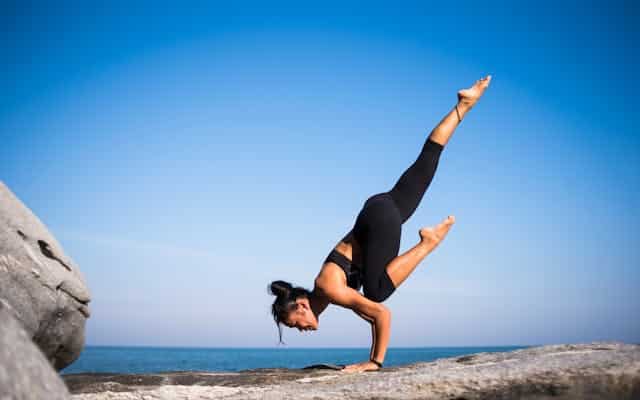What Are the Best Practices for Safe Outdoor Exercise in UK Winters?

As winter descends upon the UK, the urge to hibernate can be overwhelming. Yet, the colder months offer unique opportunities for outdoor exercise that can bolster your fitness and mental health. But how do you navigate the pitfalls of exercising in the cold to ensure both your performance and safety? This guide delves into the best practices for safe outdoor exercise during the winter, helping you stay fit while embracing the chilly weather.
Understanding the Impact of Cold Weather on Exercise
When the temperature drops, your body reacts differently to physical activity. Cold weather can affect your exercise performance, core temperature, and even blood pressure. The cold air can be harsh on your lungs, particularly for older adults or those with respiratory conditions.
A lire en complément : How to Navigate the UK Healthcare System for Mental Health Services?
Physiological Changes
Exercising in the cold prompts your body to work harder to maintain its core temperature. The cold can constrict blood vessels, making it harder for blood and oxygen to reach your muscles. This can lead to decreased performance and increased risk of injury. Additionally, your heart rate may increase as your body strives to stay warm, placing extra strain on your cardiovascular system.
Respiratory Considerations
Breathing in cold air can irritate your respiratory system, leading to issues such as bronchoconstriction. This is a particular concern for older adults and individuals with asthma or other respiratory conditions. It’s crucial to monitor your breathing and take breaks if you feel short of breath.
Dans le meme genre : Can Regular Strength Training Prevent Osteoporosis in UK Women Over 50?
Mental Health Benefits
Despite these challenges, winter exercise can have significant mental health benefits. Exposure to natural light, even in the winter months, can help combat seasonal affective disorder (SAD) and boost your overall mood. The sense of accomplishment from braving the elements can also enhance your mental resilience.
Dressing for Winter Exercise: The Layering System
One of the most critical aspects of winter exercise is dressing appropriately. The key to staying warm and safe is layering your clothing effectively. This helps regulate your body temperature and prevents excessive sweating, which can lead to chills and hypothermia.
The Base Layer
The base layer should manage moisture. Choose materials like merino wool or synthetic fabrics that wick sweat away from your body. Avoid cotton, as it retains moisture and can make you feel colder.
The Insulating Layer
The middle layer provides insulation. Fleece or down jackets are excellent choices as they trap heat close to your body while still allowing moisture to escape from the base layer. This is crucial for maintaining a stable core temperature.
The Outer Layer
The outer layer should protect against wind, rain, and snow. Opt for a breathable, waterproof jacket with good ventilation. This layer should shield you from the elements while allowing excess heat and moisture to escape.
Accessories
Don’t forget accessories like gloves, hats, and thermal socks, which are essential for preventing heat loss from extremities. Quality running shoes with good grip can also prevent slips on icy surfaces.
Adjusting Your Workout Routine for Cold Weather
Winter requires you to adapt your training and workout routines. This involves adjusting the intensity, duration, and type of exercise you engage in.
Warm-Up and Cool-Down
In cold weather, your muscles take longer to warm up. A thorough warm-up is essential to increase body temperature and loosen stiff muscles. Spend at least 10-15 minutes on dynamic stretches and light aerobic exercises before diving into a more intense workout.
Duration and Intensity
Lower temperatures and harsh conditions might require you to shorten your exercise sessions or reduce the intensity. Listen to your body and avoid pushing yourself too hard. This can help minimize the risk of injury and overexertion.
Alternative Activities
If running or cycling outdoors becomes too challenging, consider alternative forms of physical activity such as cross country skiing or snowshoeing. These activities can provide a good cardiovascular workout while being kinder on your joints.
Monitoring Your Health
Pay attention to signs of hypothermia, such as uncontrollable shivering, dizziness, or confusion. If you experience any of these symptoms, it’s crucial to seek warmth immediately. Also, be aware of frostbite, particularly in your fingers, toes, ears, and nose.
The Importance of Hydration and Nutrition
Staying hydrated and well-nourished is just as important in winter as it is during warmer seasons. Cold weather can suppress your thirst, making it easy to forget to drink enough water.
Hydration Tips
Drink water before, during, and after your exercise. Warm beverages can be particularly comforting and help maintain fluid balance. Avoid caffeinated drinks, as they can dehydrate you.
Nutrition
Your body requires more energy to stay warm in the cold. Consuming a balanced diet rich in carbohydrates, proteins, and fats can provide the fuel you need for endurance exercise. Consider carrying snacks like energy bars or nuts for longer workouts.
Supplementation
During the winter months, sunlight exposure decreases, which can affect your vitamin D levels. Consider discussing supplementation with a healthcare provider, especially if you spend limited time outdoors.
Staying Safe: Precautions and Tips
Safety should always be your priority when exercising in winter. Here are some additional precautions to keep in mind:
Plan Your Route
Choose well-lit, populated routes for your running or cycling sessions. This reduces the risk of accidents and provides easier access to help if needed. Inform someone of your planned route and expected return time.
Check the Weather
Always check the weather forecast before heading out. Avoid exercising in extreme conditions like heavy snowstorms or icy rain, which can increase the risk of hypothermia and injuries.
Use Proper Gear
Invest in running shoes with good traction to navigate icy paths. Reflective gear is also essential during the shorter daylight hours, ensuring you are visible to motorists and other pedestrians.
Listen to Your Body
Pay close attention to your body’s signals. If you feel excessively cold, numb, or fatigued, it’s crucial to end your session and seek warmth. Remember, no workout is worth compromising your health.
Exercising in the UK’s winter months can be a rewarding endeavor if approached with caution and preparation. Understanding how cold weather impacts your body and exercise performance, dressing appropriately, adjusting your workout routine, and prioritizing hydration and nutrition are all vital steps to ensure you stay safe and warm. By following these best practices, you can enjoy the unique benefits of winter exercise while minimizing the associated risks. So gear up, embrace the chill, and let the winter season enhance your fitness journey.
For further reading on the subject, refer to resources from nlm nih and ncbi nlm, which provide in-depth insights into sports medicine and exercise performance in different weather conditions. Stay active, stay safe, and make the most of your winter workouts!
